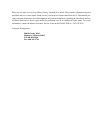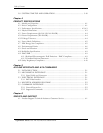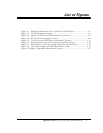
Introduction
Quickview 300 80/100/120/160/200/250/300GB PATA 1-3
• MB/s megabytes per second
• MHz megahertz
• ms milliseconds
• MSB most significant bit
• mV millivolts
• ns nanoseconds
• PATA Parallel ATA
• PC Personal Computer
• SPS Shock Protection System
• tpi tracks per inch
• µs microseconds
•V volts
The typographical and naming conventions used in this manual are listed below.
Conventions that are unique to a specific table appear in the notes that follow that
table.
Typographical Conventions:
• Names of Bits: Bit names are presented in initial capitals. An
example is the Host Software Reset bit.
• Commands: Interface commands are listed in all capitals. An
example is WRITE DMA.
• Register Names: Registers are given in this manual with initial
capitals. An example is the Alternate Status Register.
• Parameters: Parameters are given as initial capitals when
spelled out, and are given as all capitals when abbreviated.
Examples are Prefetch Enable (PE), and Cache Enable (CE).
• Hexadecimal Notation: The hexadecimal notation is given in
9-point subscript form. An example is 30
H
.
• Signal Negation: A signal name that is defined as active low
is listed with a minus sign following the signal. An example is
RD–.
• Messages: A message that is sent from the drive to the host
is listed in all capitals. An example is ILLEGAL COMMAND.


















